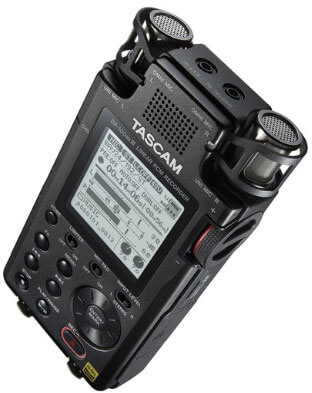
Mitch Gallagher, of Sweetwater, showcases the latest addition to the TASCAM digital recorder family, the DR-100 mkIII. This handheld digital recorder is loaded with features despite its small size. It comes with two microphones and still is able to receive external signals to produce the best recordings possible. That way you can use your favorite microphones (yes, there is switchable phantom power:)) or take the feed from a mixing console, etc.
The new generation DR-100 the mkIII is capable of recording different audio formats, it can even record MP3 and WAV files simultaneously. You can save files to a standard SD card or plug-and-play it in your computer via USB for easy access to your recording files.
It’s perfect for DSLR video (or ANY video for that matter) shoots. See our article about getting great audio on your videos here: How To Get Good Audio On Your Videos. The DR-100 mkIII would be perfect as a way to implement the tips in that article/video.
The mkIII has all the features you need for onsite or even studio recording.
Watch Mitch’s video here: http://www.sweetwater.com/insync/tascam-dr-100-mkiii-handheld-digital-recorder-review/
Home Recording Equipment
Audio For Videos: Do Not Let Bad Sound Ruin Great Video
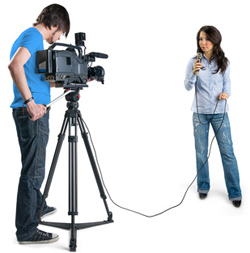 The audio for videos, especially the videos produced in a home studio, always seems to take a back seat to the visual aspects involved in the project. I can see why this might be. They are, after all, called “videos,” which seems to imply that sound is less important. But boy is that a mistake! Nothing says “amateur” to me faster than crappy, echo-y, thin voice audio on a video, no matter how good it looks. I’m betting I’m not alone in this. So the question is: why would you go to all the trouble to make a video look good if you were just going to ruin it with crap audio?
The audio for videos, especially the videos produced in a home studio, always seems to take a back seat to the visual aspects involved in the project. I can see why this might be. They are, after all, called “videos,” which seems to imply that sound is less important. But boy is that a mistake! Nothing says “amateur” to me faster than crappy, echo-y, thin voice audio on a video, no matter how good it looks. I’m betting I’m not alone in this. So the question is: why would you go to all the trouble to make a video look good if you were just going to ruin it with crap audio?
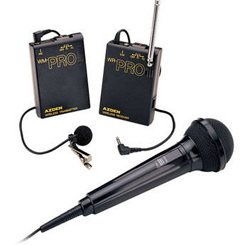
I could guess. Maybe it’s because folks don’t understand how to GET good-sounding audio on a PC recording studio. Maybe they think it isn’t important. It’s possible they believe that it requires an expensive studio or high-end costly gear to achieve professional audio. I don’t know.
What I CAN tell you though, is that sound quality can be pushed into the professional level of quality without lots of expensive gear and without having to go to a commercial studio. The truth is that it’s more about knowledge than gear. It is very possible to make terrible recordings with expensive gear. I have both done it and seen it done many times.
But it is also possible to make great sounding recordings with really cheap gear if you know what you’re doing. And guess what? You don’t have to be a recording engineer to know what you’re doing. There are some basic audio principles, along with some tips and tricks anyone can use with cheap gear, that will allow anyone with a computer and half a brain to bring the good stuff when it comes to audio for videos.
One of the main ways to get that improved audio is to use a lapel (or lavalier mic), such as the Azden WMS-Pro, which costs only $159.00. [update: There is now also a version of the WMS pro that plugs into smartphones and tablets as well! That one is the Azden WLX-PRO+i VHF Wireless Lavalier Microphone System for Cameras & Mobile Devices.
Here’s a video demonstration I did using this microphone:
The reason I mention a computer is that computers have allowed mere mortals (as opposed to tech-savvy electrical engineers or physicists with audio and acoustics engineering degrees) to record and produce high quality audio with cheap gear and modest knowledge.
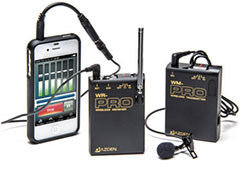
The next statement I’m going to make is going to be considered heretical to some purists. Are you ready? You don’t truly need to know that much about acoustics and audio in order to make excellent audio. It’s true. As long as you follow a few rules and understand just a couple of easy ideas, the computer age makes the rest possible and affordable. Now, before some of you pick up your rocks and take aim, know that I am not saying it isn’t better to have more knowledge about audio. But for too long regular people have been made to feel that unless they took special classes or just spent a freakish amount of time tinkering with electronics, they had to rely on the professionals if they wanted great audio. The only alternative, folks were led to believe, was to go out and buy very expensive equipment and software and, of course, then learn how to use all that stuff. Unless you were rich AND had too much time on your hands, that dog wasn’t going to hunt.
Well forget all that stuff! Home Brew Audio is here to provide all you regular people out there with the knowledge and resources you need to start recording and creating professional quality music, voice overs, loops, and sound effects with stuff you probably already own or can download for free. And we can get you started in the next 30 minutes. There really is no need to undercut the effectiveness of your videos, whether you’re making sales videos, music videos or movies. When bad sound can completely tank the best looking video, and when good sound can be had cheaply and quickly, there isn’t really any excuse for crappy audio anymore. Come on by when you’re ready to get started, and we’ll help you make better videos by making better audio quality for them.
Good Quality Headphones For $100
Here are the top headphones at around the $100 price, while most studio headphones range from about $150 and up we came up with a list for those on a budget, home studio owners or just for you who doesn’t want to spend anything more than a $100 for a pair of quality studio headphones.
Don’t worry you don’t need to compromise the sound for your budget because we have pretty good and reputable names on the list like Sony, Audio Technica and Sennheiser just name a few.
On the top of the list is AKG K-240 MKII from the well known Austrian Manufacturer.
You can see the complete list here: http://en.audiofanzine.com/studio-headphone/editorial/articles/the-best-studio-headphones-for-about-100.html
Series K Headphones by AKG
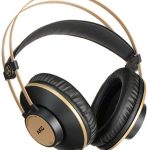 Sometimes music equipment doesn’t come cheap, especially if you want to go beyond the absolute basics when producing excellent professional quality music. Now there are some things that you can compromise when it comes to equipment but you shouldn’t do it on your headphones.
Sometimes music equipment doesn’t come cheap, especially if you want to go beyond the absolute basics when producing excellent professional quality music. Now there are some things that you can compromise when it comes to equipment but you shouldn’t do it on your headphones.
It’s pointless producing the best recordings but not be able hear them accurately. Now there are a lot of high-end headphone monitors on the market, and AKG has some of the best ones. As with anything, there is a range of types, some of which can get pretty expensive.
Then comes Series K, their most affordable series of headphones.
Read more here: http://www.musictech.net/2016/08/akg-k-series-headphones-review/
How To Use Digital Audio Workstation Software (DAW) For Video As Well As Audio
Processing audio for a video project can be quite easy if you learn to use digital audio workstation software, commonly referred to as DAW. Here are few things you should know about DAWs and how to unleash their potential in both your audio (music, voiceover, podcasts, etc.) AND video projects.
NLE or Non-linear video editing programs are commonly used for basic audio editing on video projects. But if you need beyond basic editing for your video’s audio, we recommend using a DAW, such as Reaper (Ken’s primary choice) or Pro Tools, etc. This is especially true if you are working on multiple dialogue tracks, sound effects, and music tracks. What is complicated for NLE you will find it easy when using a DAW.
For a bit on how to do basic audio-for-video editing in Reaper, see Ken’s article (with video) here: https://www.homebrewaudio.com/editing-video-in-reaper/
Read more here: http://photography.tutsplus.com/tutorials/how-to-process-audio-from-video-projects-in-reaper–cms-26598